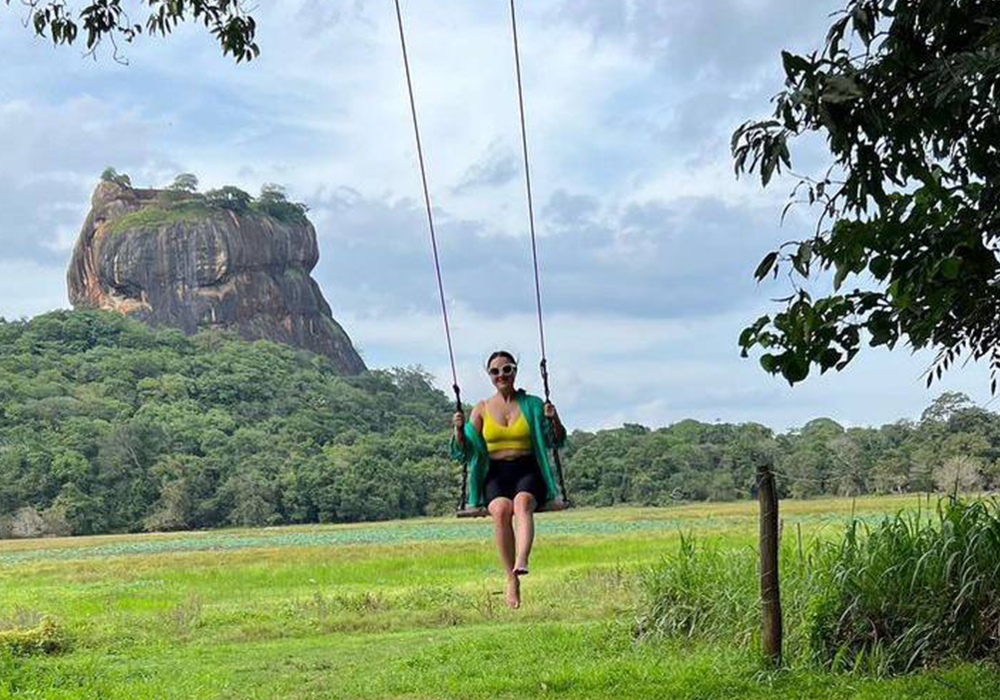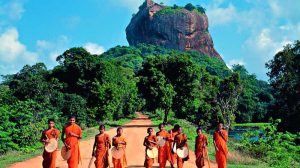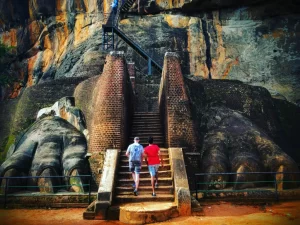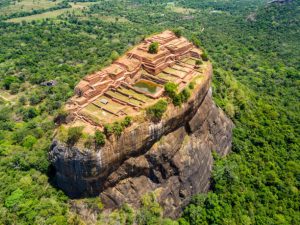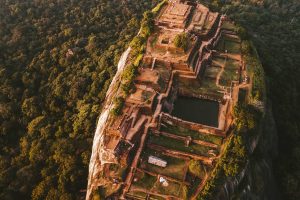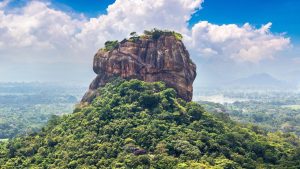Sigiriya
Unveiling the Magnificence of Sigiriya: Sri Lanka’s Iconic Rock Fortress
Nestled amidst the lush greenery of Sri Lanka’s Cultural Triangle stands the majestic Sigiriya, an ancient rock fortress shrouded in myth and mystery. Rising dramatically from the surrounding plains, this UNESCO World Heritage Site is a testament to the island’s rich history and cultural heritage, captivating visitors with its awe-inspiring architecture, breathtaking frescoes, and panoramic vistas.
A Royal Citadel
Sigiriya, also known as the Lion Rock, holds a prominent place in Sri Lanka’s historical narrative, serving as a royal citadel and monastery during the reign of King Kasyapa in the 5th century AD. The fortress was constructed atop a massive granite rock, which rises 200 meters above the surrounding landscape, providing unparalleled views of the surrounding countryside.
The centerpiece of Sigiriya is the ancient palace complex, which is nestled atop the rock plateau and accessible via a series of steep staircases and terraced gardens. The palace complex is adorned with exquisite frescoes, depicting celestial maidens known as “apsaras,” as well as a mirror wall adorned with ancient graffiti and inscriptions.
Architectural Marvels
The architectural ingenuity of Sigiriya is evident in its meticulously designed layout and engineering feats, which include elaborate water gardens, fountains, and defensive structures. The fortress is surrounded by a series of moats, ramparts, and gardens, which served both practical and aesthetic purposes, reflecting the sophisticated urban planning of ancient Sri Lanka.
At the summit of Sigiriya, visitors will encounter the remnants of the ancient palace complex, including the throne platform and audience hall, which offer insights into the opulence and grandeur of Kasyapa’s reign. The summit also features the iconic Lion Gate, flanked by two monumental lion paws, which once formed the entrance to the royal citadel.
Cultural Legacy
Sigiriya’s cultural significance extends beyond its architectural splendor, encompassing a rich tapestry of legends, folklore, and religious symbolism. According to ancient chronicles, Sigiriya was once home to a magnificent garden paradise known as the “Sigiriya Gardens,” which were said to rival the legendary gardens of Babylon in their beauty and splendor.
The site is also steeped in religious history, with the rock fortress later serving as a monastery following Kasyapa’s demise. The frescoes adorning the rock face are believed to depict scenes from Buddhist mythology, providing a window into the spiritual beliefs and artistic traditions of ancient Sri Lanka.
Visitor Experience
Today, Sigiriya remains one of Sri Lanka’s most iconic tourist destinations, attracting visitors from around the world eager to explore its ancient ruins and marvel at its natural beauty. Guided tours of the site offer insights into its rich history and cultural significance, while providing opportunities for photography and exploration.
Visitors to Sigiriya are advised to wear comfortable footwear and bring plenty of water, as the climb to the summit can be steep and challenging. The site is open to visitors year-round, although the best time to visit is during the dry season (from May to September), when the weather is most favorable for outdoor exploration.
Preserving Heritage for Future Generations
Sigiriya’s cultural and historical significance has earned it recognition as a UNESCO World Heritage Site, ensuring its protection and preservation for future generations. Conservation efforts within the site focus on maintaining its architectural integrity, preserving its ancient frescoes, and safeguarding its natural surroundings.
By fostering a culture of conservation and appreciation for Sigiriya’s unique heritage, we can ensure that this iconic landmark continues to inspire wonder and awe for centuries to come. Whether you’re a history buff, an architecture enthusiast, or simply a curious traveler, a visit to Sigiriya promises an unforgettable journey into the heart of Sri Lanka’s storied past.

